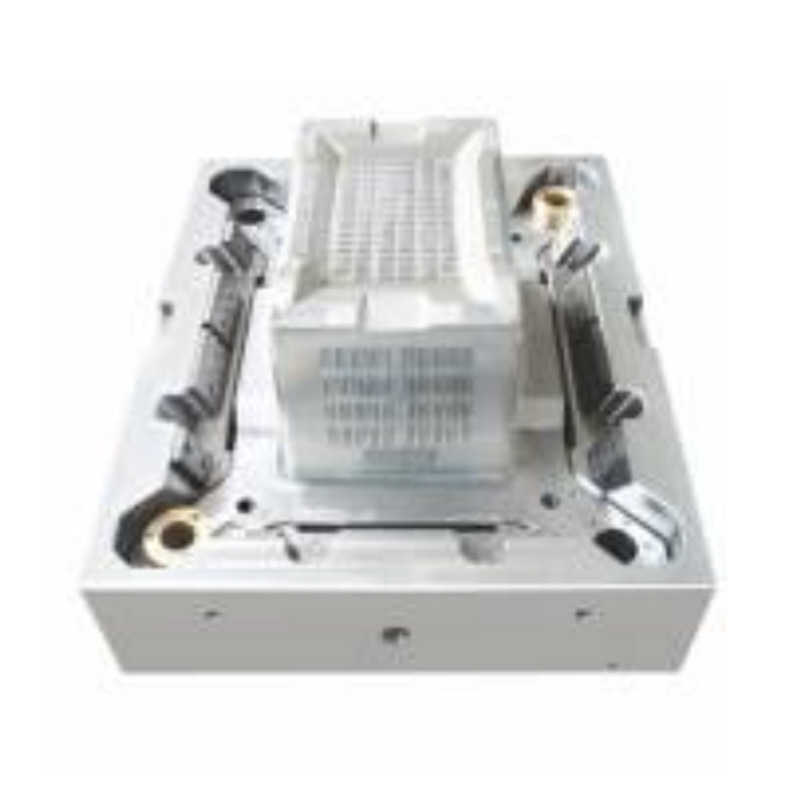Agricultural Produce Plastic Basket Crate Injection Mold
The hollow turnover box mold for agricultural products is specially de...

High-temperature injection molding is a common process for producing durable and complex plastic baskets. However, prolonged exposure to elevated temperatures can pose risks to the Plastic Basket Mold, potentially affecting its dimensional stability, surface quality, and lifespan. Understanding how heat interacts with mold materials, design features, and process parameters is critical to preventing deformation and ensuring consistent product quality over long production cycles.

1. Steel Grades and Heat Tolerance
High-quality tool steels such as P20 or H13 are commonly used in basket mold fabrication for their ability to withstand prolonged heat without significant distortion.
Softer or lower-grade steels may expand unevenly, warp, or develop micro-cracks under continuous high-temperature exposure.
2. Surface Treatments and Coatings
Surface hardening techniques, such as nitriding or chrome plating, enhance thermal resistance and reduce the risk of localized deformation.
Protective coatings can also decrease thermal fatigue, prolonging the mold’s operational life in high-temperature conditions.
1. Uniform Wall Thickness
Maintaining consistent wall thickness throughout the mold reduces stress concentration and uneven thermal expansion, which can cause warping.
Thicker sections should be reinforced with ribs to resist thermal bending without affecting the basket’s functional shape.
2. Strategic Gate and Runner Placement
Properly positioned gates and runners ensure an even flow of molten plastic, reducing areas of differential cooling that can stress the mold.
Balanced filling prevents localized overheating, which may accelerate deformation in weaker sections of the mold.
3. Draft Angles and Ejection Design
Adequate draft angles reduce friction during part ejection, preventing additional mechanical stress on the mold surface caused by repeated high-temperature cycles.
1. Injection Temperature Control
Maintaining stable injection temperatures is critical; spikes or prolonged exposure above the recommended range can soften mold material locally, causing distortion.
Automatic temperature regulation systems help maintain consistent thermal conditions throughout long production runs.
2. Cooling System Efficiency
Integrated water or oil cooling channels are essential for dissipating heat evenly.
Uneven cooling can cause thermal gradients, increasing the risk of mold bending or dimensional changes over time.
3. Cycle Time Optimization
Prolonged high-temperature residence in the mold may exacerbate thermal stress accumulation.
Optimizing cycle times ensures that the mold does not remain exposed to excessive heat longer than necessary.
1. Regular Inspection for Thermal Wear
Continuous monitoring of mold dimensions and surface integrity helps detect early signs of heat-induced distortion.
Using precision measurement tools, manufacturers can track expansion or wear and schedule preventive maintenance.
2. Preventive Maintenance Practices
Polishing, cleaning, and minor repairs prevent surface defects from developing into structural issues.
Recalibrating alignment and tightening mold components counteract minor thermal expansion effects.
While prolonged high-temperature injection molding presents a potential risk for deformation, careful selection of materials, optimized mold design, precise process control, and regular maintenance can significantly mitigate these effects. A well-engineered Plastic Basket Mold incorporates uniform wall thickness, balanced runner systems, and efficient cooling channels to maintain dimensional stability. By integrating monitoring systems and proactive maintenance schedules, manufacturers can achieve consistent production quality and extend mold life, even under demanding thermal conditions. Proper attention to these factors ensures that the mold performs reliably throughout long-term, high-temperature injection operations.